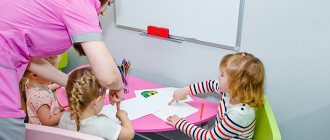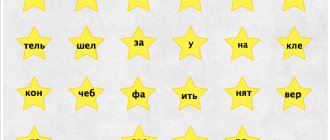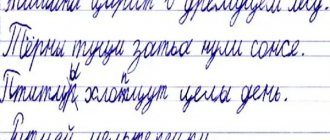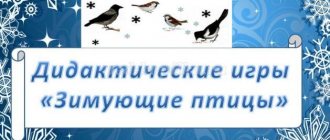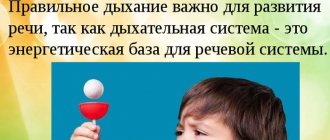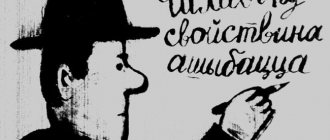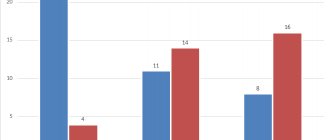Author of the material: Ermolaeva Zhannetta Evgenievna -
Co-founder of the portal Eduneo.ru, candidate of philological sciences, associate professor, speech therapist, linguist expert.
Expert: in the field of Russian language, literature, teaching methods, speech therapy
Author's project: online platform for expert teachers Eduneo
A child’s full speech is one of the means of increasing his level of communication skills, a way of developing him as an individual, and ultimately a way of achieving the best social adaptation.
Among speech disorders, deficiencies in written speech occupy a special place.
Dysgraphia is a partial disorder of the writing process associated with insufficient formation (or decay) of mental functions involved in the implementation and control of written speech.
Depending on the immaturity or impairment of a particular writing operation, 5 forms of dysgraphia are distinguished:
- articulatory-acoustic;
- acoustic;
- dysgraphia due to immaturity of language analysis and synthesis;
- ungrammatical;
- optical dysgraphia.
Along with “pure” forms of dysgraphia, mixed forms are encountered in speech therapy practice.
Let's consider those game exercises that will be useful for an elementary school teacher to correct Optical Dysgraphia.
The following errors are typical for the manifestation of optical dysgraphia:
- replacing letters consisting of different numbers of identical elements;
- replacement of similar, but differently located letter elements in space;
- omissions, not completing elements of letters;
- mirror image of letters.
Correction of optical dysgraphia
The success of eliminating disorders in this type of dysgraphia directly depends on the prevention of deviations and the timely start of classes. At the same time, a competent combination of classes with a professional speech therapist-defectologist and home techniques aimed at developing the child’s speech and written functions will help to achieve maximum efficiency.
Corrective work must be individual, consistent and systematic. Exercises to correct optical dysgraphia are aimed at:
- the formation of a child’s visual perception of shapes, sizes, colors of objects;
- development of visual memory;
- work on auditory and visual analysis and synthesis;
- mastering the skills of graphic symbolization;
- differentiation of symbols (letters) that have a similar graphic expression.
- development of fine motor skills.
Only a competent speech therapist-defectologist can develop an individual plan for the correction of optical dysgraphia for a child, taking into account the peculiarities of the onset of the pathology, age and other characteristics of the child’s psyche.
Article:
Working in a preschool institution for children with visual impairments, speech therapists are increasingly warning parents about the problem of dysgraphia, which occurs in many first-graders already at the beginning of the first year of school.
Let's try to figure out what kind of “beast” this is and is it so scary? Can parents cope with dysgraphia on their own or should they definitely turn to specialists?
In speech therapy, dysgraphia is a partial specific impairment of writing. Specific means that it is not based on a violation of spelling rules, for example, when a student did not learn his homework. The core of dysgraphia is the inconsistency of various speech components, disordered work of analyzers, higher mental operations, and a sequence of written actions that has not been worked out to the point of automatism.
Written speech is a later form of language than oral language, but can we underestimate its importance today? The question is rhetorical, because written speech has not only revolutionized the ways of accumulating, processing and transmitting information, but has also qualitatively changed the basic mental functions of a person, in particular his ability to think abstractly.
Writing, as part of the second signal system, or, according to the teachings of academician Ivan Petrovich Pavlov, the system of “signals of signals,” differs from oral speech in that it must be purposefully taught. Learning and mastering writing is a complex, long-term process that the child does not realize. If only our baby knew that in order to learn to write, he needs (think about it!) to establish new connections between the harmonious work of four analyzers: speech-motor, speech-auditory, visual and motor - he would probably give up such an undertaking with fear. In other words, the child needs to compare the word heard, pronounced and written down.
For mastering written speech, the formation of all aspects of speech, as well as the preservation of analyzers, higher mental functions, and the organized sequence of writing operations are essential. And, accordingly, everything is the same, but with the particle “not” leading to one or another violation of writing. Therefore, it is logical to classify dysgraphia by type.
Types of dysgraphia: – articulatory-acoustic, when the child replaces or omits letters in accordance with substitutions or omissions in oral speech; – acoustic, which manifests itself in the replacement of letters corresponding to phonetically similar sounds, despite the fact that in oral speech the sounds are pronounced correctly; – dysgraphia due to a violation of language analysis and synthesis, which is based on the actual violation of various forms of the language component: dividing sentences into words, syllabic and phonemic analysis and synthesis, etc.; – agrammatic dysgraphia, which is associated with underdevelopment of the grammatical structure of speech: morphological, syntactic generalizations; – and, finally, optical dysgraphia, associated with underdevelopment of visual gnosis, analysis and synthesis, spatial representations, which manifests itself in substitutions and distortions of letters in writing.
It is impossible to immediately understand the whole variety of written disorders in one article, so we propose to start with optical dysgraphia.
Back in the middle of the 19th century, our great compatriot, Petersburger Pyotr Frantsevich Lesgaft, teacher, anatomist and physiologist, considered all pedagogical phenomena from the standpoint of materialism. He and his followers noted that every conscious work (and writing is conscious work) requires an understanding of the meaning of space and time, as well as the ability to cope with these relationships in everyday life, and as early as possible.
For optical dysgraphia, this issue is of fundamental importance, since when writing there is a mutual transformation of the spatial sequence of graphic signs and the temporal sequence of audible sound complexes.
As you know, we have two ears, eyes, two arms and two legs. Boris Gerasimovich Ananyev, a Soviet psychophysiologist, attached great importance to the paired structure of analyzers and pointed out the direct dependence of this pairing on the spatial conditions of the existence of the organism in the environment. After all, the right hemisphere is subordinate to the left half of the body and vice versa. A person’s clear distinction of space is formed on the basis of his perception of his own body. And this perception, in turn, is based on tactile sensitivity, muscle, organic sensations. It takes a while for the baby to formulate a complete diagram of his body in his mind: lying in his crib, he finds his upper limbs, then his legs. At first, the child does not pay attention to the movements of his own hand, then he begins to follow its movements, and then he directs it himself. It turns out that the main tool for cognition of spatial-object relations is the “hand - vision” connection. Further - more: a sign of normal development and healthy activity of both hemispheres is the completion of the lateralization process, that is, the determination of the leading hand, ear, eye, and, accordingly, the determination of the dominant hemisphere.
We offer you several correctional and developmental exercises , the use of which does not require special tools or knowledge.
Exercise 1 Clearly identify the child's leading hand. Tell all your home and kindergarten teachers about this. Give a spoon, pen, comb, pencil only to this hand. Today, tests for this determination are widely known: clasp your hands, cross your legs, cross your arms over your chest, throw a tennis ball, look through the viewfinder of a camera or through the eye of a kaleidoscope, and so on.
Exercise 2 As early as possible, start using prepositions and auxiliary words that denote the spatial relationships of objects (under, above, on, between, right, left) in a conversation with your baby. Explain their meaning and constantly remind: everything that is near the right hand is on the right, everything that is in the middle of two objects is between, and so on. Use verbal instructions in any appropriate situation. On a walk: “Let’s go swing on the swing on the left,” “Put the excavator between the cars.” In routine moments: “Turn over to your right side and fall asleep.” Or: “Take the spoon in your right hand and the bread in your left.” In the game: “Put the book on the table and roll the ball out from under the sofa.” Focus on these words, intone them more expressively, use all the richness of the melodic-intonation side of speech: timbre, strength, pitch of the voice. Ask the child himself to explain what “because of”, “from under”, “above” or “on” means.
Exercise 3 At the same time, teach your child to navigate his own body. Learn the names of all parts of the body, even such nuances as cheekbones, lobes, bridge of the nose, metacarpus, wrist. And then play the confusion game. The rules are as follows: you say the name of one part of the body, and place your hands on the other. The child’s task is to hear you and put his hands on the named, and not on the shown, part of the body. At the same time as you consolidate your orientation in your body, you will work on increasing the volume of auditory attention, sensitivity to the speech of your interlocutor, and such an important skill as the ability to listen to spoken speech.
Exercise 4 When your son or daughter begins to navigate well in space relative to their own body, you can proceed to the next stage. Stand opposite, notice to the child that your right hand seems to be on the other side. The same is with the eye, ear, leg and other paired parts of the body. Ask him to touch his left leg with his right hand, and then to yours. It is useful to do this exercise in front of a mirror. Let the child take his right earlobe with his left hand, etc.
Exercise 5 Place some object pictures on a cork or magnetic board, or on a piece of Whatman paper, or directly on the refrigerator door. For example, favorite fairy tale characters. Or items of the same lexical topic (vegetables, fruits, wild animals). Explain to your child that from top to bottom these are columns (no more than 3-4), and from left to right are rows (also 3-4). Now play the traveler game. Ask your child to find the given picture with his eyes. Now he will take “steps” from her. At first, you can help with a pointer, then work only with your eyes. One “step” is progress to the next picture. The adult gives the direction. For example: “What is between the cucumber and the onion?”, “What is under the potatoes?”, “What is above the radish?”. Or: “Find a tomato. From the tomato, take two steps up, one to the right, three down, two to the left. What is located there? Pay attention to the child that “between” can be both horizontally and vertically. Teach your child to count rows and columns. Ask him to list all the items in the first row or third column. Here you are already working not only to prevent optical dysgraphia, but also to create the prerequisites for learning to read.
Exercise 6 Introduce into the child’s vocabulary as early as possible and as many words as possible that indicate the location of objects in space. Explain what horizontal and vertical are. Ask him to use these words, constantly stimulate awareness of their semantic load: “Place the sheet in front of you horizontally. Draw a vertical line."
Exercise 7 Teach your child to navigate the map. Tell us that a plan is a view of an object from above. Draw a plan of a room or apartment with him. Place the toys in different places in advance and, having provided the baby with a plan, give instructions for the search: “Stand to the right of the table. Walk five steps forward. Turn left. There's a closet in front of you. The toy is on the third shelf from the top.” At first, motivation can be reinforced by the prize found, but remember that the higher the success, the less praise and that the reflexive motive must be replaced by conscious action. When you have mastered the apartment, go to the courtyard, draw a plan of the road to the kindergarten or to the clinic.
Exercise 8 The next game is convenient to play with a large number of people (more than five people). Explain to your child the meaning of the words “behind” and “before”. Now ask him to stand behind his grandfather. In front of grandma. Between brother and sister. To the right of my aunt. To the left of mom. Emphasize that first the baby must determine where this or that hand is on a relative or friend. To do this, you need to compare your position and his. And only then take the right place. That is, to carry out your instructions, the child must sequentially perform three analytical operations! Therefore, at first, do not rush him and verbally encourage him. Are all your relatives at work? No problem! Tables and chairs, bears and dolls - that’s all the family!
Exercise 9 Place a sheet of paper in front of the child. Teach you to identify its upper (farthest from yourself) edge and lower (closest to you). Offer to determine the center of the sheet. To do this, first learn to fold the sheet from top to bottom and from right to left. Explain that the intersection of the folds is the center of the sheet. In the future, the baby will learn to do this “by eye.” Now we draw according to the instructions. For example, we draw a house in the center. Behind the house there is a large tree, in front of the house there is a front garden and a flower bed. On the right is a swing, on the left is a sandbox. Or turn the leaf into a beautiful scarf: red flowers in the center, blue flowers in the upper left corner, green leaves in the lower right corner, and so on. There is an orange fringe along the bottom edge... Further creativity depends only on your joint imagination. Immediately pay attention to the grip of the pencil, to the formation of the “habitual writing posture”: the back is straight, the head is slightly tilted, both elbows are on the table. Teach your child to change the position of the brush, rather than twirling the sheet around the pencil, in order to more conveniently draw some detail.
Exercise 10 Introduce the girl or boy to the notebook. Tell us what a cover is and why margins are needed. What is a work page? First, we learn to draw a straight line along the line of cells: from top to bottom and from left to right. Then we learn to select a cell. Count the specified number of cells from the top and left edges. Learn to write dictations by ear: “From a given point, two cells up, three to the right...”. This way you can draw fancy patterns or shapes, and even letters. A more complicated version of the task will be to orient the child in the box. Finding its top right corner, center, bottom edge or left corner.
* * *
It is known that the sooner you start working on a particular task, the sooner you will see positive results. If you begin to consistently perform the exercises suggested above, turn your classes into a system where the main principle is “little by little, but every day”, if you are able to convince and involve the whole family in the process, then success is guaranteed to you and with one of the “pitfalls” of schooling – optical dysgraphia – you most likely will not encounter.
However, answering the second question posed at the beginning of the article, I would like to insistently note: if there are persistent specific errors in the letter, immediately seek help from a specialist!
Examples of exercises to correct optical dysgraphia
Practice shows that the best results come from playful forms of work. To begin with, you can ask your child to complete these simple tasks:
- An exercise to differentiate between simple symbols and images that are superimposed on each other. These can be letters, outlines of animals or household objects familiar to the student. You should find all the letters in the picture and write them down separately.
In the next picture, you need to find and paint over with a colored pencil those letters that are in the words “smoke” and “cat”.
Exercises allow the baby to develop visual memory and focus on correct perception and differentiation of object shapes. - A task to develop the perception of the size of objects. The child is asked to look at the picture and form a word, taking into account that the first letter is the largest, the second is smaller, and the last is the smallest. For example, in the first puzzle the student must find the word “cat”, in the second – “feast”, etc.
The same task should be performed with the opposite condition: the letters in the word increase rather than decrease. That is, having solved the first puzzle, the child will determine the word “mouth”, the second - “gender”, etc. - Graphic dictations. One of the most useful exercises for developing correct orientation in the surrounding space and hand-eye coordination. The dictation is selected depending on the age of the child and his preparedness.
- An exercise for developing fine motor skills and preparing the hand for writing basic symbols and signs. The child needs to place a pencil at the beginning of the figure and, without lifting the pen from the paper, completely trace each element using the hatching.
- An exercise for recognizing letters in their mirror image. The student is asked to find the correctly written letters in the image and color them in.
- A task for recognizing letters with a similar graphic expression. The child is asked to solve the code. If the letter “i” is denoted by the number 2, because it has 2 hooks, and the letter “w” is denoted by the number 3, because it has 3 hooks, then how to correctly write the encrypted words: - boy2k; — l2l2ya; - l2stock; — 3tans; - horse; - 323ka.
All exercises are carried out in a playful way, so they do not cause discomfort or negative emotions in the child. The tasks are aimed at solving a key problem, because when completing them, the student constantly thinks about the features of writing letters, and also independently finds differences and similarities in them. Ultimately, this is what ensures the acquisition of writing skills.
Publication date: 04/10/2019. Last modified: 01/13/2020.
